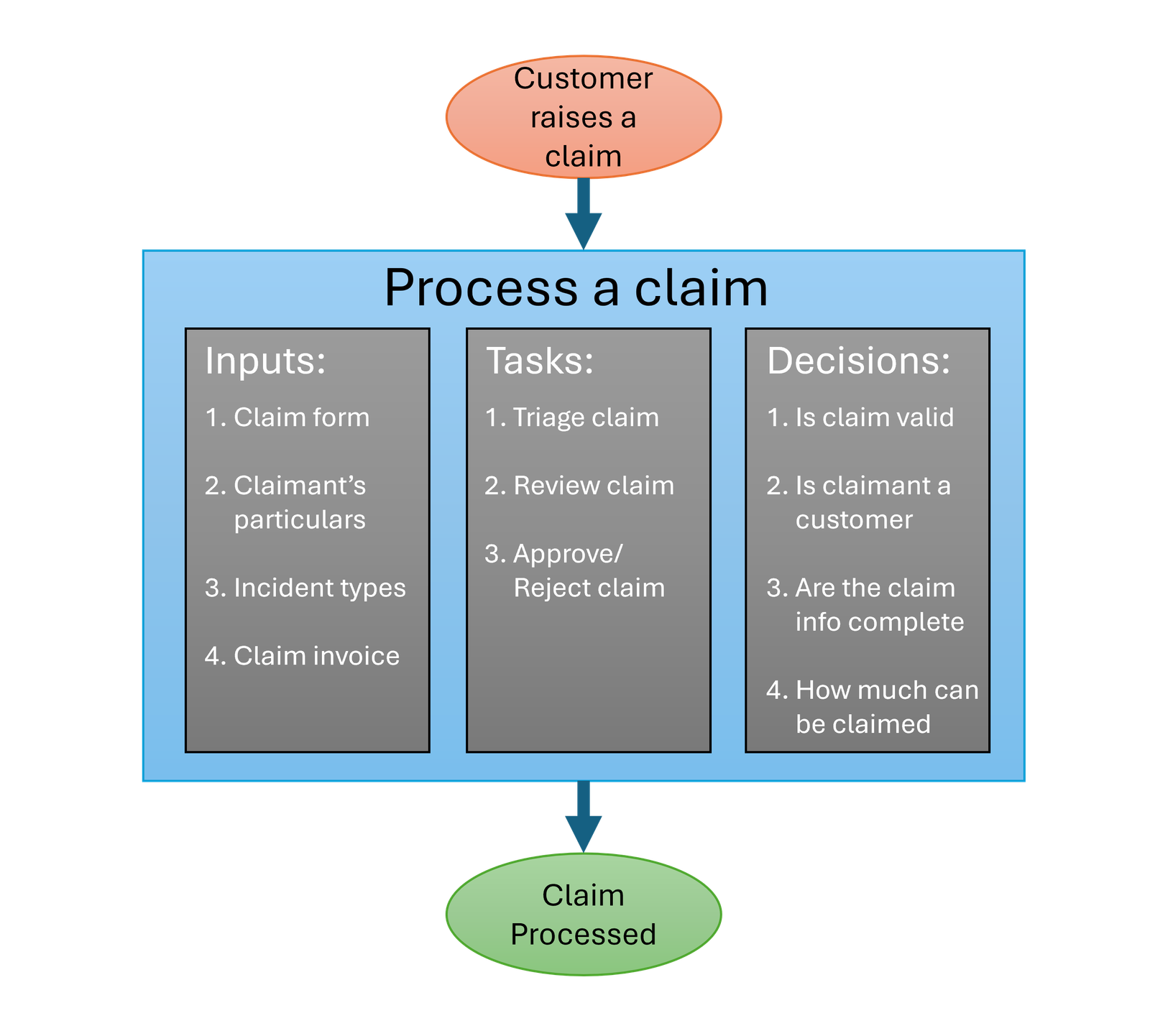
What is a Process make up of?
Processes are made up of components that include inputs, outputs, events, tasks and decisions.
- Inputs enter the process when a specific event occurs
- Tasks and decisions are performed upon or with the inputs
- and at the end of the process, an output is generated
Inputs
Input refers to anything that enters a process or is required to enter a process to drive the creation of an output. In the example above, the inputs are the claim form and information provided by the claimant in order to claim from their insurance policy for an incident of loss or damage.
Understanding all inputs to a process is important in Six Sigma because inputs are often causal factors regarding a process. Inputs or the results of those inputs can cause errors or defects in the process.
- Understanding the resources required for a process to run
- Identifying extraneous inputs that aren’t required
- Understanding costs for the process
- Understanding how the process relates to processes that come before it
Outputs
It is important to note that the Process Customer is not always the traditional end customer or service. The Process Customer can be internal or external, and in some cases, the customer of a process is not even a person.
From a Six Sigma perspective, an output is almost always of more value to the process than the input is. The process itself involves adding value of some kind to the inputs.
Events
Tasks
- Triaging the claim
- Review the claim
- Approve or reject the claim
And this tasks may be broken into more granular sub-tasks which define the step-by-step procedure the tasks are performed.
Decisions
- Is claim valid?
- Is claimant a customer?
- Are the claim info complete?
- How much can be claimed?
